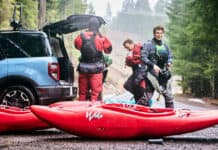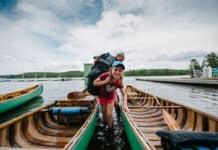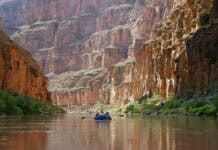Hot sand between my toes is usually a great feeling on a mid-summer Saturday morning. Except the sound of the air-horn blast indicated my toes should no longer be in the sand. They should be cool and wet and pointed downstream.
In the early spring, as the snow was melting and the entire summer lay out before me, I’d signed up for my first standup paddleboard race. For two months prior to this August day I’d told myself that I would train. Tomorrow. You know how that goes.
How I lost and won my first paddleboard race
As tomorrows came and went the tiny voice in my head worked hard to convince me I had nothing to worry about. I would be okay. A couple weeks before the race I panicked and called a buddy who agreed to loan me his spare race board. I would compensate for my complete neglect of physical training and skill development with better equipment.
The second annual Upper Ottawa Race and Paddle Festival [now part of the Water and Dirt Festival] is a collaboration between two neighboring towns rich with paddling history on the Ottawa River right here in Rapid Media’s neck of the woods. The primetime headliner is the canoe, kayak and standup paddleboard race beginning at the beach in Petawawa and finishing 13 kilometers later at Riverside Park in Pembroke where there is camping, vendors and the after-party.
The search for a trusty steed
The morning of the race I arrived late and ran through my first prerace routine. Who am I kidding? My pre-race routine consisted of a free cup of specialty coffee and a frantic search for my buddy’s Toyota Matrix, upon which should have been tied my ticket to ride.
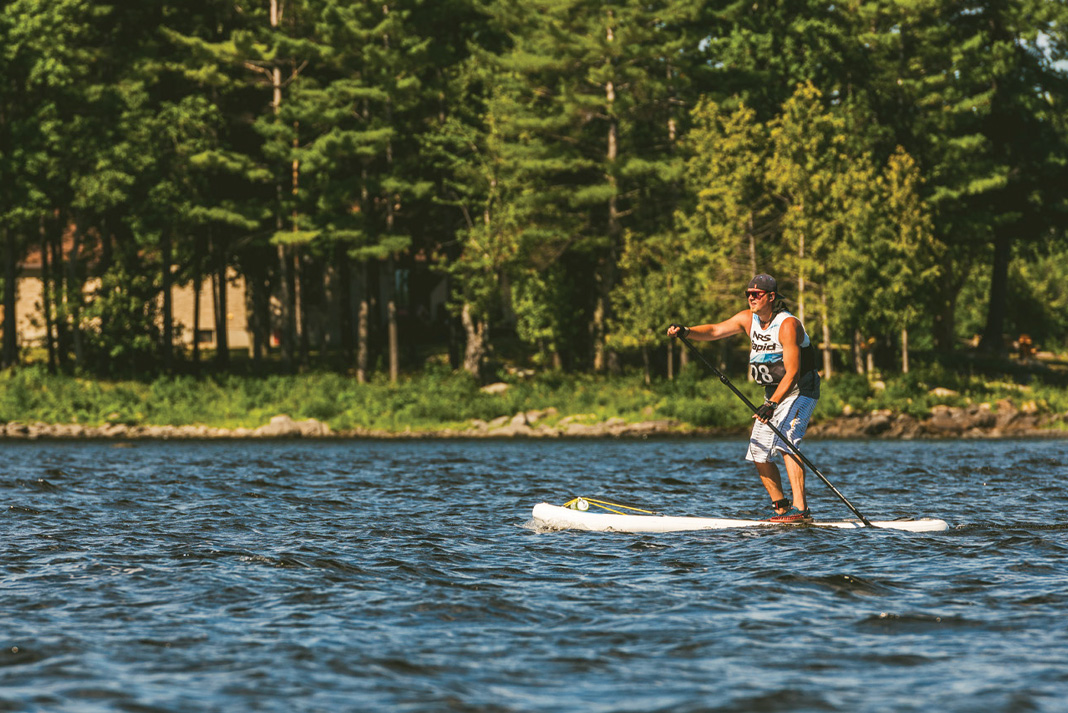
Standup paddleboards designed specifically for racing are sleek. They are light. They are long. They are jet fighters. They are constructed of space-age carbon fiber materials. A board like this should have been easy to spot on top of a car, especially when the rest of the racers were already on their boards on the water, warming up and lining up. By comparison, an inflatable whitewater paddleboard is more like a county fair jumpy castle than an F-4 Phantom II. When bounding down rocky rivers you don’t need to be fast. A whitewater board is tough, wide, stable and slow. And the only board I could find.
Having spent the better part of my adult life sitting in canoes and kayaks, I wasn’t as familiar with the special elements of standup paddleboarding. Kayak Angler magazine editor Ric Burnley tells me the elevated perspective of paddleboards offers anglers a better vantage point for sight fishing redfish in saltwater flats. By the time I gave up looking for my loaner race board, dug the inflatable board out of the back of my car, blew it up, and got on the water, all the higher vantage point offered me was perspective on how far ahead of me the rest of the paddling field was—the second to last paddler was just rounding the point and disappearing out of sight.
Going the distance
Arriving at the finish line dead last, I thanked the river gods the few remaining spectators didn’t know I worked for this publication.
It turned out the race organizers had a prize for last place. And last place was actually first place for my board class and size category. I was the only one out of more than 90 racers foolish enough to be on an inflatable sub-12-foot board.
I will paddle this race again. Between now and then I’m going to train and I’m going to find myself a real race board. I may not win next year, but I won’t lose.
“I can see for miles and miles and miles, oh yeah.” | Feature photo: Rory Toop


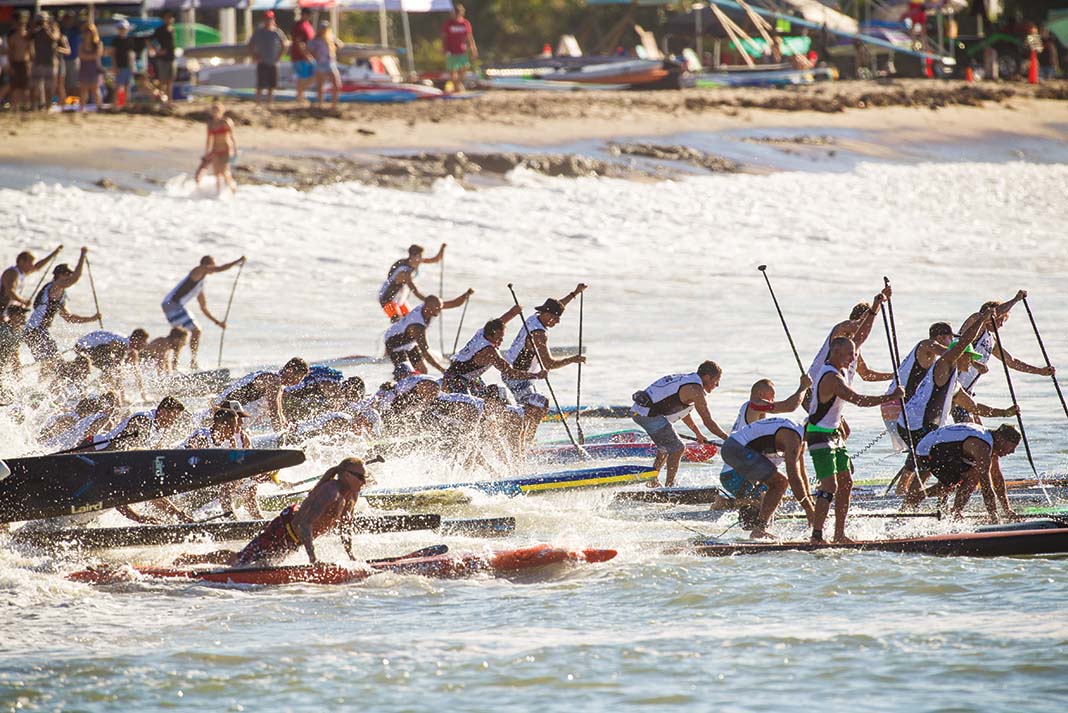
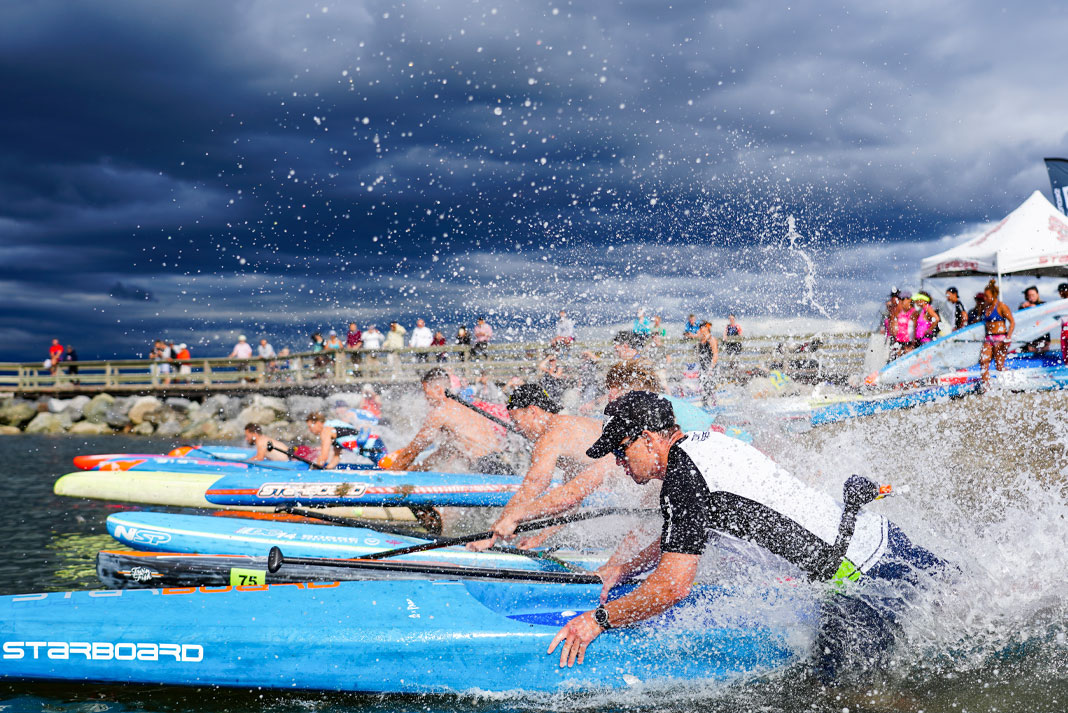
 This article was first published in the 2017 Paddling Buyer’s Guide and was republished in the 2023 Paddling Trip Guide.
This article was first published in the 2017 Paddling Buyer’s Guide and was republished in the 2023 Paddling Trip Guide. 